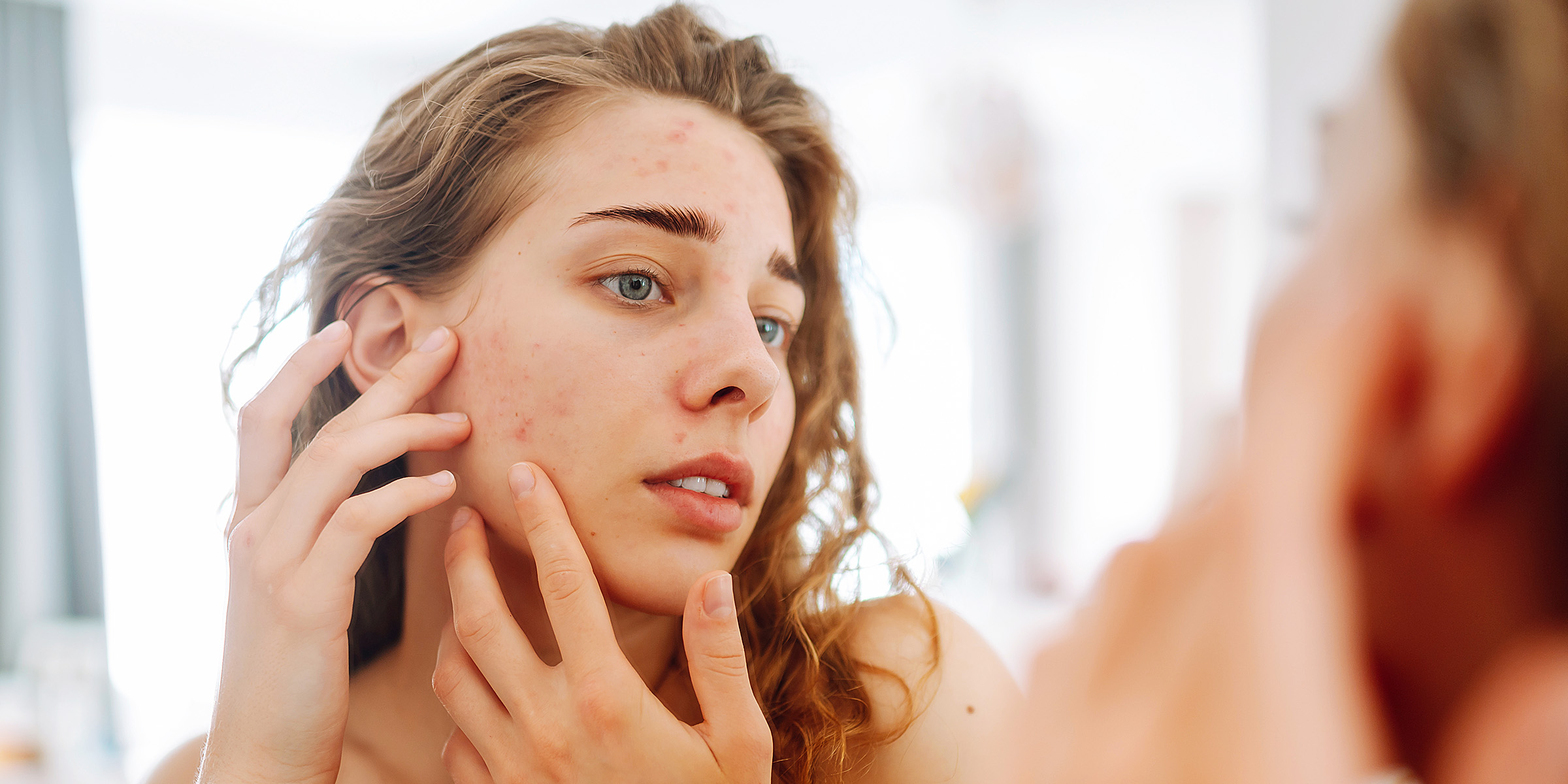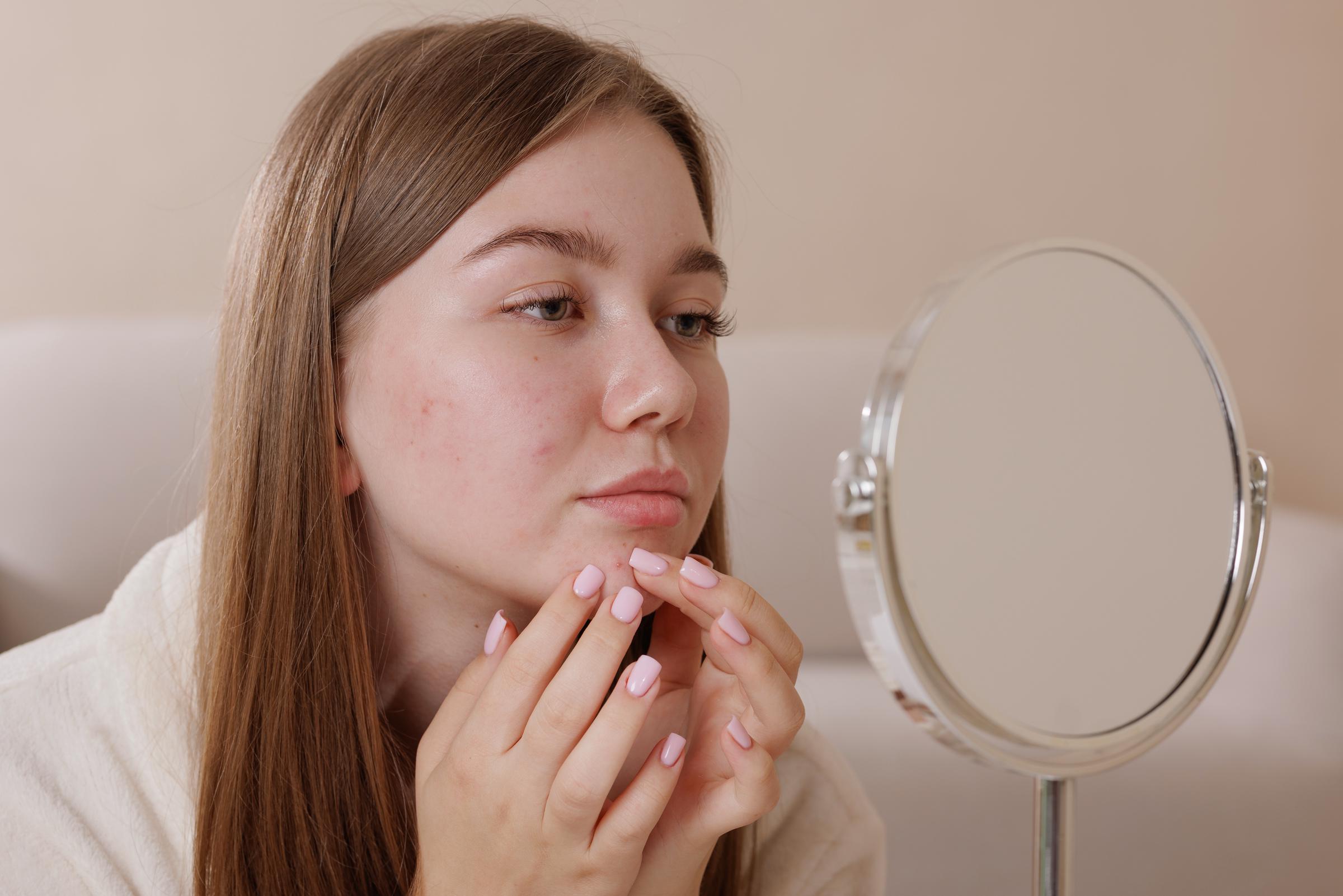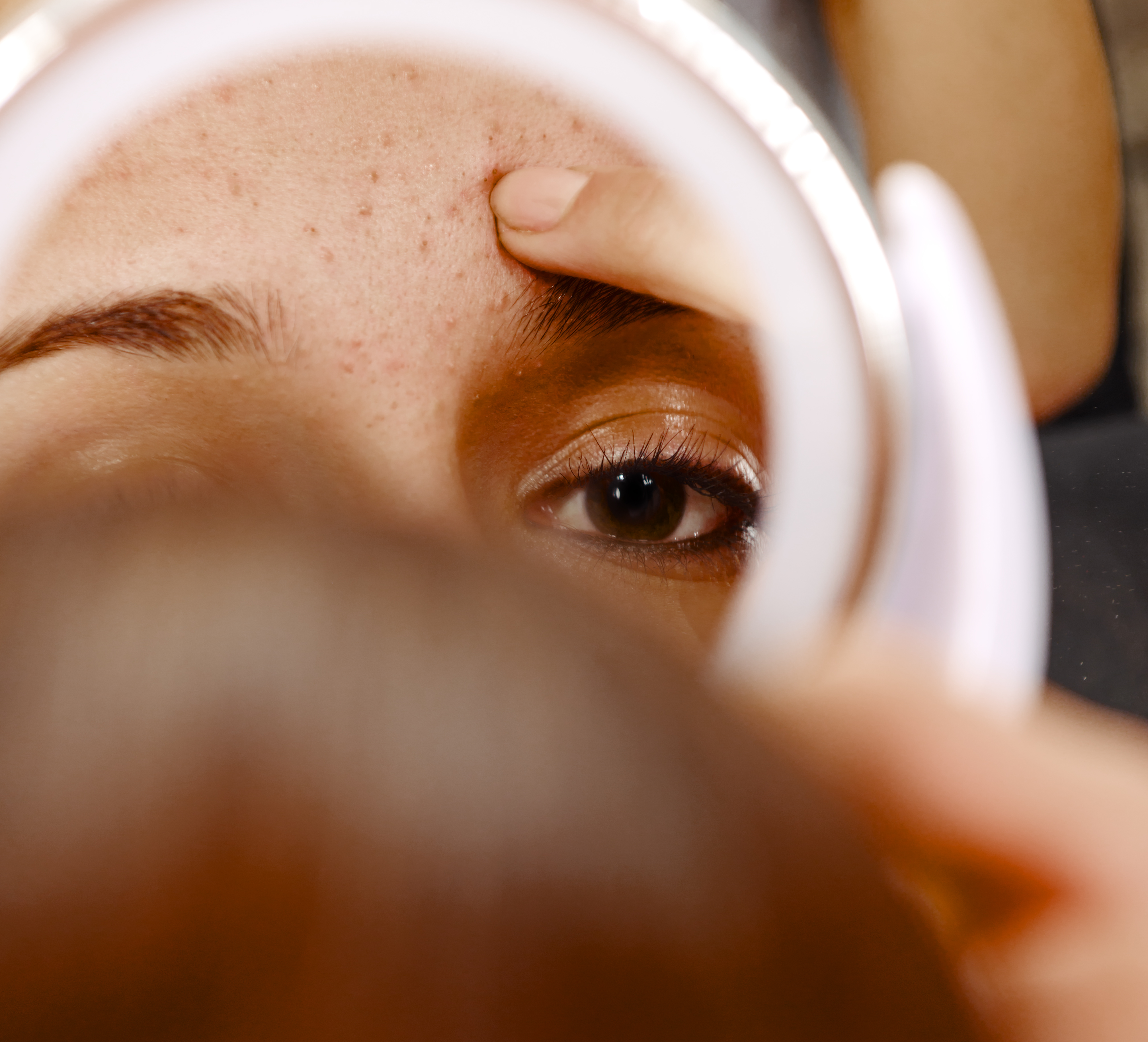
Are You Over-Exfoliating? The Hidden Cause of Skin Sensitivity
Having clear, healthy, glowing skin is something millions of people attempt to achieve everyday. But in that quest for a poreless, plump appearance, it's easy to go a little overboard.
Exfoliation is generally considered an effective — and sometimes necessary — way to remove dead skin cells, making way for fresh, radiant skin. However, when done excessively and too often, it does become "too much of a good thing."

A woman inspecting her face in a mirror | Source: Getty Images
When you overwhelm your skin with cell-scrubbing cleansers, toners, grains, and serums, it can lead to a whole host of the very issues you're trying to alleviate. Moreover, some of the key issues that exfoliation is meant to target can also be markers of over-exfoliation.
If you're worried you might have taken it too far with this part of your skincare routine, here's how you can tell and what you should do.

A close up of a woman with a skin breakout | Source: Getty Images
Signs You Might Be Over-Exfoliating
As previously mentioned, exfoliation works by breaking down and removing dead skin cells, helping even out the texture of your skin. When overdone, however, you end up stripping your skin of its natural oils, exposing it to irritants and aggressors.
The effects of excessive exfoliation include:
- A weakened moisture barrier: According to the American Academy of Dermatology Association, over-exfoliation can damage the epidermis — outer layer of your skin — the stratum corneum, and the moisture barrier protecting the skin. When your skin moisture barrier is weakened, it increases the risk of the skin being exposed to bacteria and environmental aggressors.
- Breakouts: Because your skin has been stripped of its natural oils, the sebaceous glands will produce more sebum as overcompensation. This can lead to clogged pores, breakouts, bumps, as well as uneven skin texture.
- Damaged lipid layer: Your skin has a lipid barrier, which is responsible for moisture retention and keeping aggressors out. Over-exfoliation can break this layer down, making your skin more susceptible to discomfort. This can appear as tightness in your skin, a waxy appearance due to dehydration.
As a result, you will start experiencing some combination of the following symptoms: redness and irritation, inflammation, dryness and flakiness, and increased sensitivity to other products in your routine.

A woman with a serious skin reaction looking at herself in the mirror | Source: Getty Images
What to Do If Your Skin Is Over-Exfoliated
According to Dr. Aanand Geria, a dermatologist with Geria Dermatology, the first thing you want to do to remedy the symptoms of over-exfoliation outlined above is to stop exfoliating until your skin heals and returns to its baseline texture.
Baseline texture differs from person to person, but what it basically means is what your skin felt and looked like before over-exfoliation. Note that it can take as long as a month — which is the length of a skin cell cycle — for your skin to go back to normal.
In the meantime, you want to stop using foaming cleansers, retinol products, and physical or chemical exfoliators, and instead switch to a mild cleanser and a fragrance-free moisturizer. Additionally, you can spot-treat extremely red or raw areas with a rich emollient, like Aquaphor or Aqua Veil. You can also use a hydrocortisone cream or aloe gel.

A woman applying cream to her face | Source: Getty Images
When to Start Exfoliating Again
Once your skin has fully healed, you can start reintroducing your favorite exfoliating products gradually and strategically. Then, if you don't experience any issues, you can work your way up from there. It's recommended, however, that you stick to either a physical or a chemical exfoliant, as mixing both can lead back to square one.
"Often it is recommended that people try both AHAs (alpha hydroxy acids) and BHAs (alpha hydroxy acids) to see what works for them and then stick to that routine," Dr. Geria adds. "But combining can often lead to over-exfoliating, especially because many of these exfoliators have shared properties."
The information in this article is not intended or implied to be a substitute for professional medical advice, diagnosis or treatment. All content, including text, and images contained on WomanlyLive.com, or available through WomanlyLive.com is for general information purposes only. WomanlyLive.com does not take responsibility for any action taken as a result of reading this article. Before undertaking any course of treatment please consult with your healthcare provider.
